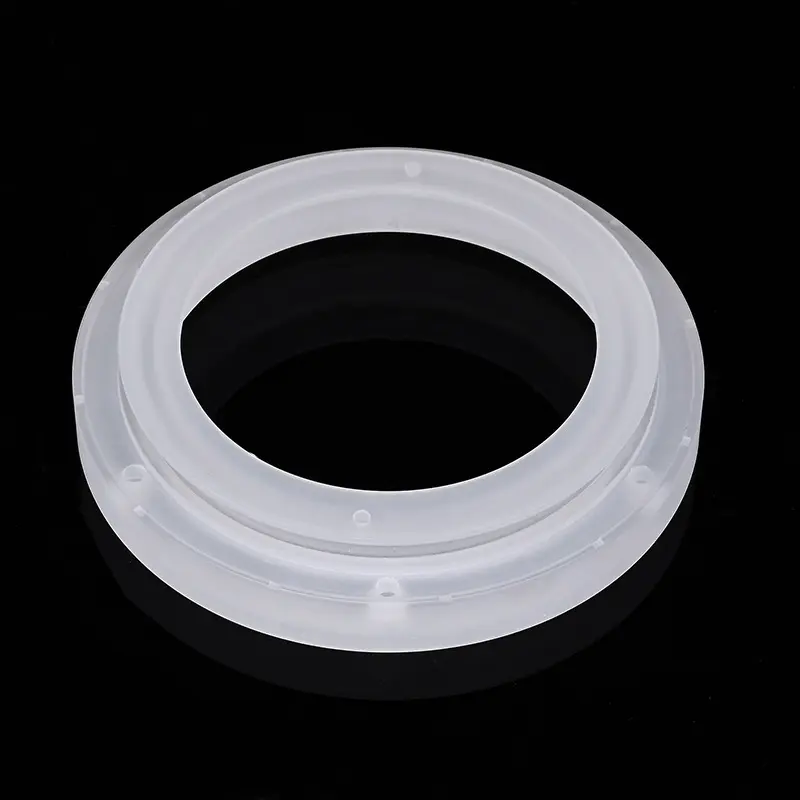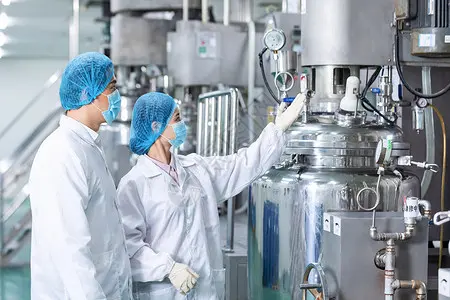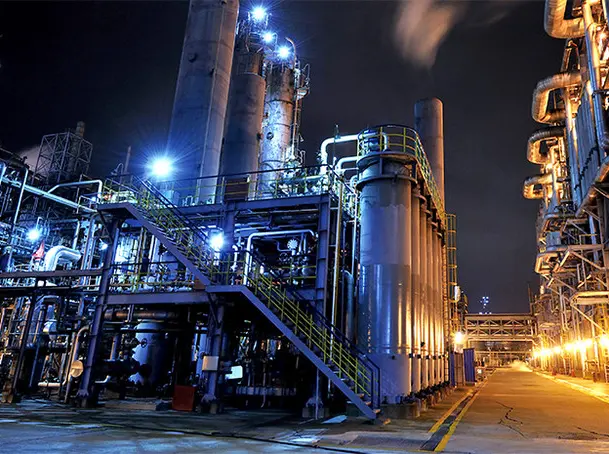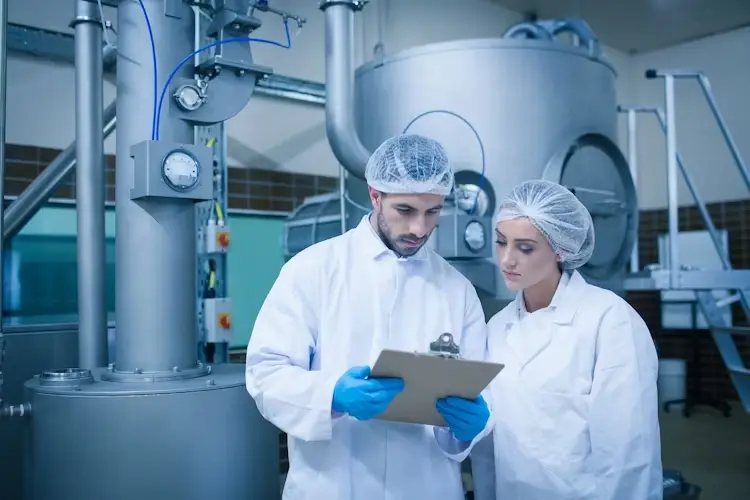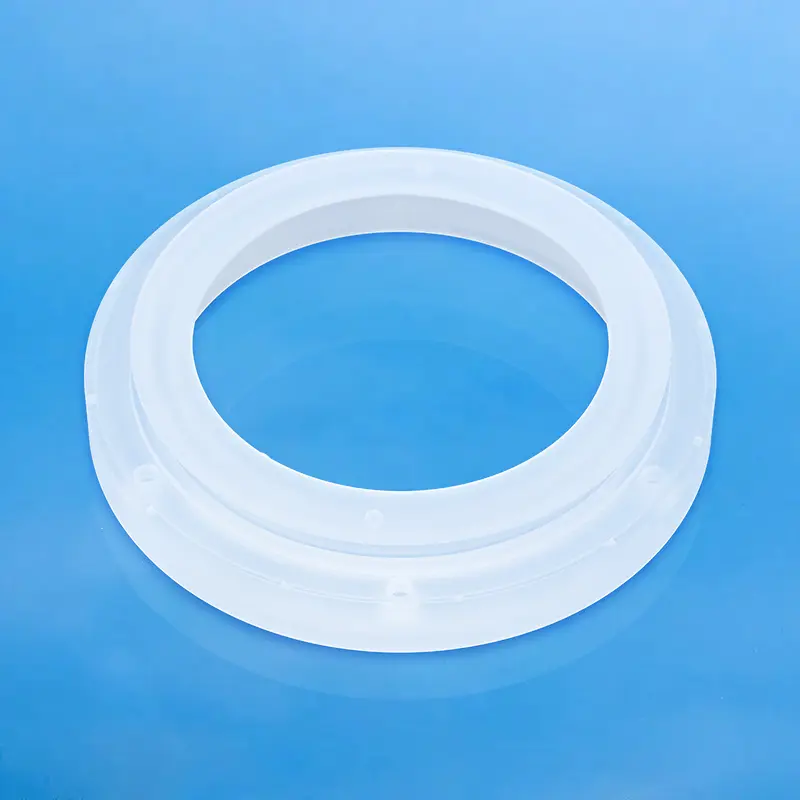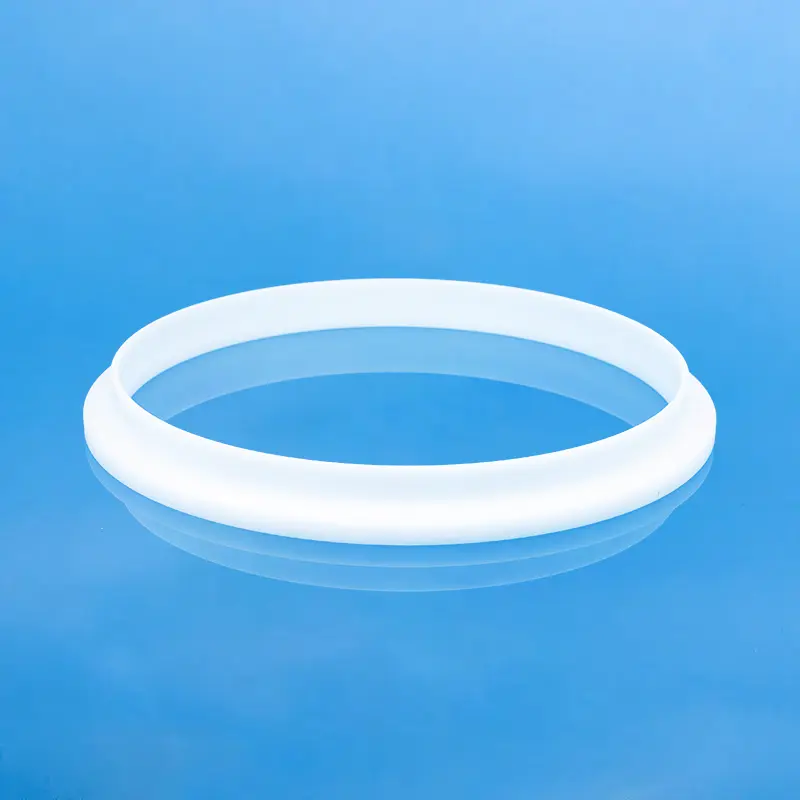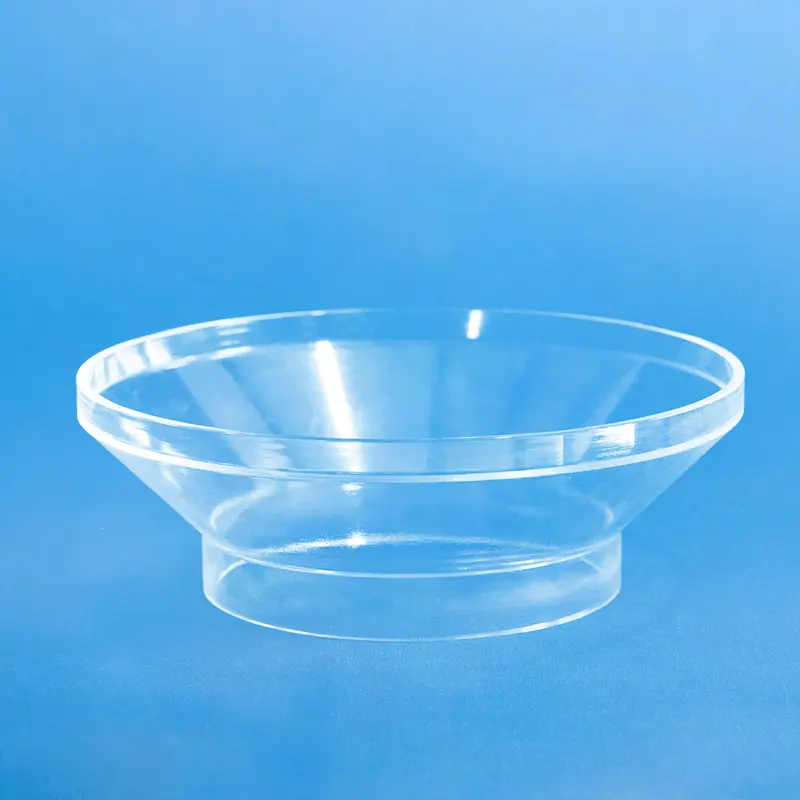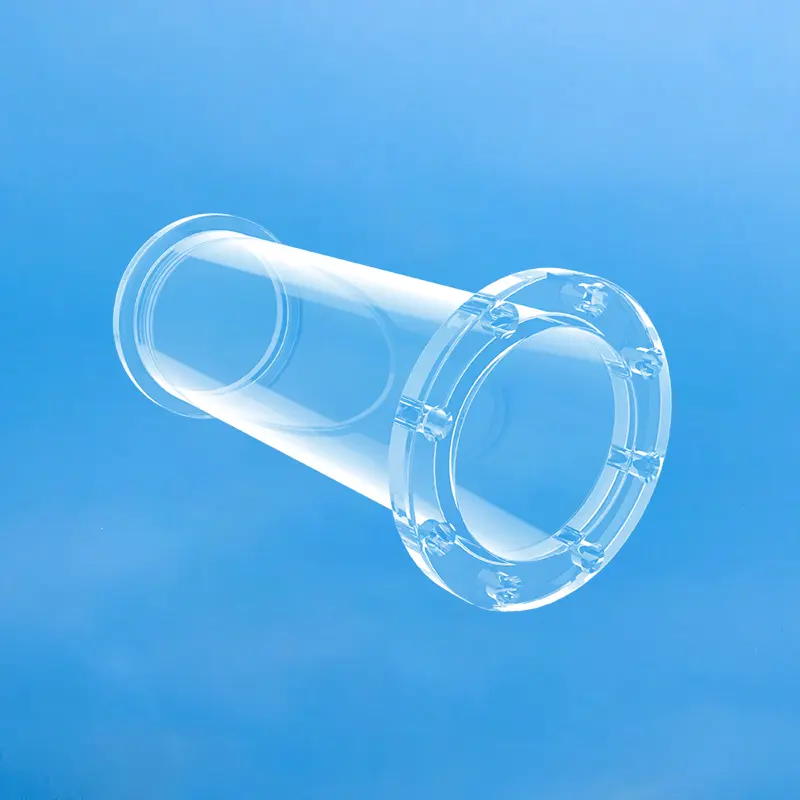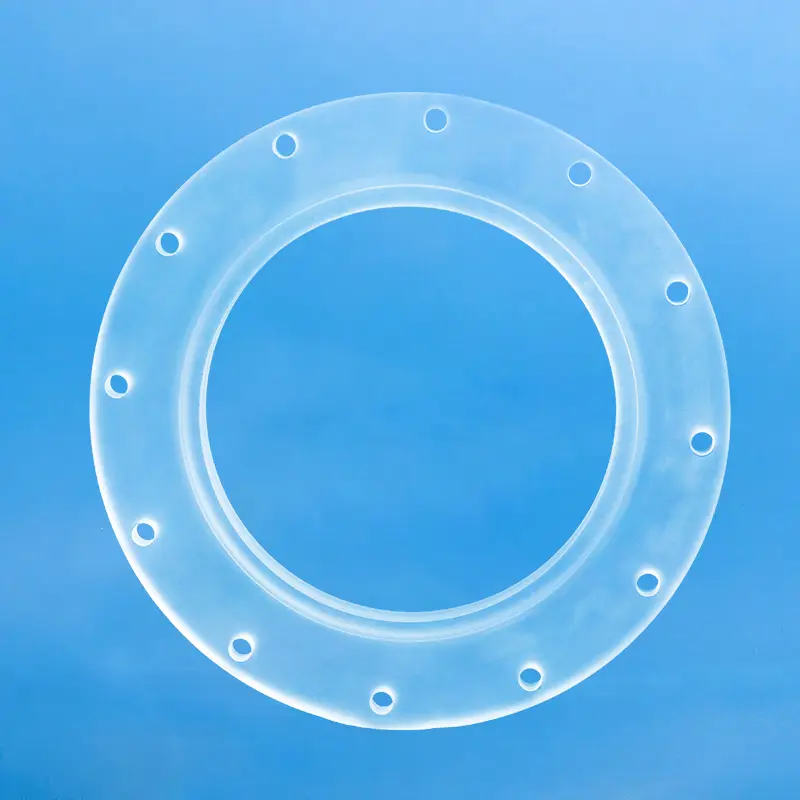Quartz flanges are high-performance pipe connection components made from high-purity quartz glass, characterized by their excellent corrosion resistance and high-temperature performance. They are widely used in industries such as chemical processing, pharmaceuticals, and bioengineering due to their ability to withstand extreme temperatures and chemical media, ensuring the stable operation and long-term reliability of piping systems.
| Содержание недвижимости | Стоимость недвижимости |
|---|---|
| SiO2 | 99.99% |
| Плотность | 2,2×10³ кг/см³ |
| Твердость | 5,5 - 6,5 Шкала Мооса 570 KHN 100 |
| Прочность на разрыв | 4,8×10⁷ Па (Н/мм2) (7000 фунтов на кв. дюйм) |
| Прочность на сжатие | >1,1×10⁹ Па (160 000 фунтов на кв. дюйм) |
| Коэффициент теплового расширения | 5,5×10-⁷ см/см°C (20°C-320°C) |
| Теплопроводность | 1,4 Вт/м-°C |
| Удельная теплота | 670 Дж/кг-°C |
| Точка размягчения | 1730 °C (3146 °F) |
| Точка отжига | 1210 °C (2210 °F) |
| Точка деформации | 1120 °C (2048 °F) |
| Рабочая температура | 1200°C (2192°F) |
| Электрическое сопротивление | 7×10⁷ Ом см (350°C) |
| Размер | На заказ |
| Логотип | Подгонянный логос принимает |
High-Temperature Performance
Quartz flanges can withstand extremely high temperatures, typically above 1000°C, making them suitable for high-temperature environments, such as high-temperature steam pipes and molten metal transport systems.
Excellent Chemical Stability
Quartz flanges exhibit exceptional resistance to various chemical substances, including strong acids, strong bases, and organic solvents, which makes them highly favored in the chemical and pharmaceutical industries.
High-Purity Material
Quartz flanges are manufactured from high-purity quartz glass, allowing their use in cleanroom environments within the semiconductor and microelectronics industries as they do not release particles or chemicals that could contaminate products.
Good Mechanical Strength and Durability
Quartz flanges possess good mechanical strength and durability, maintaining their structural integrity even under repeated temperature and pressure fluctuations, thereby extending the lifespan of equipment.
Сценарий применения
Petrochemical Industry
Within the petrochemical industry, quartz flanges serve as important pipe connection components. They meet the requirements for harsh environments characterized by high temperatures, high pressure, and strong acids/bases. Their unique impact resistance makes them particularly useful for connecting pumps and valves.
Electronics and Electrical Industry
Quartz flanges are widely applied in the electronics and electrical industries, such as for connecting precision pipes in LED chip production, and oxide synthesis reactions in solar cell manufacturing. Their high purity and corrosion resistance ensure the precision connections and the purity and continuity of reaction processes.
The primary material of quartz flanges is high-purity quartz glass, which exhibits exceptional corrosion resistance and high-temperature performance. It can effectively resist the erosion of various chemical substances, including strong acids, strong bases, and organic solvents, while maintaining stability in high-temperature environments (typically exceeding 1000°C), without deforming or melting.
Quartz flanges are widely used in industries such as chemical processing, petrochemicals, electronics and electrical, and food manufacturing. In the chemical and petrochemical industries, they are used for pipe connections involving high-temperature and corrosive media. In the electronics and electrical industries, they are used for precise pipe connections in LED chip production and solar cell manufacturing. In the food manufacturing sector, they are used for transporting slightly corrosive materials, ensuring food safety.
The maintenance and replacement cycles of quartz flanges depend on multiple factors, including the operating environment, temperature, pressure, and the type of chemical media involved. Generally, if quartz flanges are properly used and regularly maintained, their service life can be quite long. However, with increased use, they may gradually lose performance due to wear, contamination, or the formation of micro-cracks. It becomes necessary to replace them when such issues occur. The specific maintenance and replacement cycles should be determined based on actual usage conditions and the manufacturer’s recommendations.
Часто задаваемые вопросы
Кварцевое стекло - это твердый и хрупкий материал с отличными физическими и химическими свойствами, чрезвычайно высокой механической твердостью, хорошей электроизоляцией, высокой температурой и коррозионной стойкостью, низкой и стабильной задержкой, хорошим светопропусканием и т.д. Он широко используется в полупроводниках, оптике, электричестве, химии, аэрокосмической промышленности, автомобилестроении и других областях. Твердые и хрупкие материалы трудно поддаются обработке, поэтому во многих областях срочно требуются процессы резки с небольшим разрушением кромок, меньшими потерями материала, низкой шероховатостью поперечного сечения и широким диапазоном толщины реза. Традиционным методом резки кварцевого стекла является механическая резка, то есть резка кругом. К нетрадиционным методам резки относятся водоструйная резка, резка проволокой электрохимического разряда, непрерывная лазерная резка и т. д. Механическая резка имеет низкую стоимость, но контакт между кругом и материалом приводит к большому износу инструмента, а материал легко загрязняется инструментом. Кварцевое стекло подвержено разрушению кромок, микротрещинам и остаточному напряжению, что влияет на прочность и эксплуатационные характеристики материала! Трудно добиться криволинейной резки и требуется последующая обработка, такая как шлифовка и полировка. Лазерная резка не контактирует непосредственно с материалом, не имеет контактного напряжения и может выполнять сложную криволинейную резку. Пикосекундный лазер обладает такими преимуществами, как малый диаметр пятна, высокая точность, короткое время воздействия на материал и малая площадь воздействия, и подходит для обработки твердых и хрупких материалов.
。

